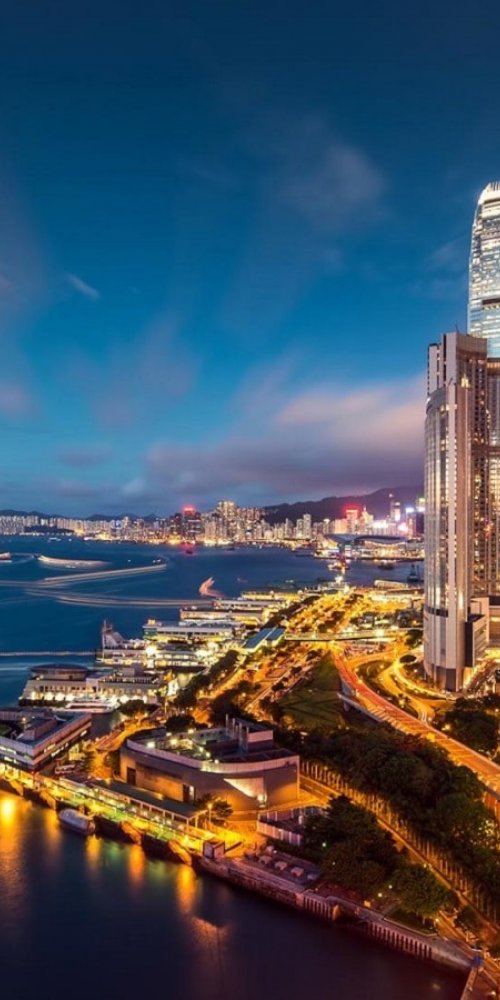

Step onto the bustling streets of Hong Kong, HK, and the city’s energy envelops you instantly. Ticket barriers beep rhythmically as commuters swiftly tap Octopus cards, while the iconic double-decker trams chime their bells along historic tracks. Voices intertwine in Cantonese, English, Tagalog, and more, creating a lively tapestry of sound. You catch the faint rumble of the metro below and the gentle splash of Star Ferry boats crossing Victoria Harbour. The scent of street food mingles with salty sea air - every journey on public transport here is an immersive plunge into the city’s vibrant pulse.

When I first climbed the cathedral tower in Central, I realised how essential public transport was to fully experience Hong Kong, HK. This city’s compact yet sprawling layout makes private cars a liability - traffic snarls and sky-high parking fees await you. Instead, public transport here scores on speed and cost-effectiveness. The MTR zips you across islands in minutes, while the iconic Star Ferry offers a scenic shortcut spent on salty breezes rather than in gridlocked traffic.
Economically, fares are pocket-friendly. With single fares starting as low as HKD 4, a trip across the city is affordable even for budget travellers. Passes multiply savings with unlimited travel options, perfect if you plan deep exploration. Plus, public transport in Hong Kong, HK is incredibly green - the metro operates on electricity, reducing air pollution levels and helping the city maintain a breath of fresh air amidst its skyline. Buses and ferries complement with energy-efficient fleets, making your journey not just affordable but sustainable.
In essence, when you use public transport in Hong Kong, HK, you’re tapping into a web designed for efficiency and eco-friendliness, all while embedding yourself in the city’s rhythms. It’s more than just getting from A to B; it’s about seamless urban immersion and saving precious time for adventure over logistics.
| Mode | Lines | Peak Frequency | Night Service |
|---|---|---|---|
| Metro (MTR) | 11 lines (incl. Airport Express) | Every 2–4 minutes | Limited (some lines until midnight) |
| Tram | 1 historic route (Hong Kong Island) | Every 5–8 minutes | Until 12:30am |
| Bus | Hundreds of routes (KMB, NWFB) | Varies by route, 5–15 minutes typical | Some night routes available |
| Ferry | 7 main routes (Star Ferry & others) | Every 10–20 minutes | No night service |
| Bike-Share | Multiple providers, limited zones | N/A | 24/7 availability |
The public transport network in Hong Kong, HK is a finely tuned symphony of options balancing iconic heritage with modern rapid transit. If you want to explore beyond Hong Kong Island’s tram routes Hong Kong, HK are your best bet for scenic, leisurely trips, but to cover distances fast, tap into the metro Hong Kong, HK system - almost flawless in its frequency and connectivity. Buses fill gaps in suburban areas, and ferries charm with harbour crossings you won't want to miss. Learning this network unlocks the city, making your travel smooth and confident.
Travelling during peak hours in Hong Kong, HK - typically weekday mornings (7am-9am) and evenings (5pm-7pm) - means packed carriages and bustling platforms. But don’t let this put you off; trains arrive as frequently as every 2 minutes on busy lines, so you won’t wait long. Early mornings can be most congested as office workers flood the MTR.
Off-peak hours are blissfully quieter, around midday and late evenings, making it easier to snap photos or find a relaxed seat on double-decker trams. Peak-time fares remain the same as off-peak, so no penalty for travelling when convenient, but you gain comfort by choosing less busy times.
On buses, peak overloads translate to standing rooms only and fewer seats, so be prepared for a lively commute. Night services are sparse, so plan ahead if you’re relying on public transport late at night.
My tip? For iconic experiences like tram routes Hong Kong, HK are magical in off-peak serenity, while the metro Hong Kong, HK rush carries the city’s heartbeat home - both are worth fitting into your schedule.

The entire MTR system is wheelchair accessible with elevators, ramps, and priority spaces on trains. Trams have low-floor boarding but can be crowded, so timing is crucial. Buses have kneeling functions, but older models may limit access; ask drivers if unsure.
Most metro stations have wide gates to accommodate prams, and priority seating is available on all transport modes. Avoid rush hours for a relaxed experience, as peak times can be tight. Folding strollers fit easily on MTR trains and trams.
Airport Express trains provide spacious luggage racks and dedicated space, perfect for travellers heading between the airport and the city centre. Regular metro trains have limited luggage room, so pack smartly or time your trip off-peak for comfort.
Yes, the Octopus card is accepted across the MTR, trams, buses, ferries, and even convenience stores, making it the most versatile option for how to get around Hong Kong, HK.
Most buses accept Octopus card or exact cash. Single-ride paper tickets can be bought onboard from the driver only on some models. For convenience, use Octopus or apps to buy bus tickets Hong Kong, HK.
Absolutely! The trams run a single, lengthy route along Hong Kong Island’s northern coast. Hop on and off freely; routes are well marked, and trams are a charming way to see the city at street level.
If you plan more than two or three journeys a day, passes offer excellent value. They also simplify transfers and save time buying individual tickets.

Additional articles from our network with useful insights about Hong Kong.